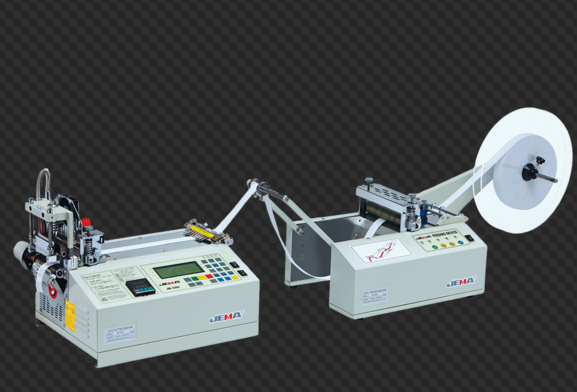How Blade Configuration and Angle Affect Performance in Elastic Tape Cutting Machine

Flexibility in Tape Cutting
In modern manufacturing, elastic tapes come in a variety of widths and thicknesses, requiring machines that can adapt to different product specifications. The Elastic Tape Cutting Machine must provide adjustable blade layouts and cutting angles to handle these variations without compromising precision or quality. Flexibility in design ensures consistent performance and reduces downtime caused by tool changes, making it an essential feature for high-volume production environments.
Blade Layout and Its Role in Cutting Accuracy
Blade layout determines how the tape is guided and severed during the cutting process. Fixed blades may limit the machine to specific tape widths, while adjustable blades allow operators to configure the spacing according to the material being processed. By optimizing blade placement, the machine can maintain uniform edge quality and accurate length, even when switching between narrow and wide tapes. Properly aligned blades reduce mechanical stress on the tape, preventing deformation and maintaining product integrity.
Importance of Cutting Angle Adjustment
The cutting angle affects both the quality of the cut and the tension applied to the tape. A blade positioned at an improper angle can cause stretching, tearing, or uneven edges. Adjustable angles allow operators to fine-tune the cutting action for different tape materials and widths. For highly elastic or sensitive tapes, small adjustments in the angle can significantly improve edge smoothness and reduce the risk of defects. Combining adjustable angles with correct feed rates ensures precise, repeatable results across varying production requirements.
Operational Considerations for Adjustment
Ease of adjustment is crucial to maintain production efficiency. Modern machines often include user-friendly mechanisms for changing blade positions and angles quickly, minimizing downtime. Digital indicators or locking systems can ensure repeatable settings, reducing the likelihood of operator error. Training operators to understand the relationship between tape width, material properties, and blade configuration is equally important for achieving optimal cutting performance.
Maintenance and Calibration
Regular maintenance supports the effectiveness of adjustable blade layouts and angles. Worn or misaligned blades can compromise cutting quality, regardless of adjustability. Periodic calibration ensures that blades remain correctly positioned and angled, maintaining consistent results. Proper lubrication and inspection of adjustment mechanisms prevent mechanical wear and ensure smooth, reliable operation over time.
Achieving Versatile and Precise Tape Cutting
In conclusion, the ability to adjust blade layout and cutting angle is essential for the Elastic Tape Cutting Machine to handle tapes of different widths and materials effectively. By providing flexibility in blade positioning, optimizing cutting angles, and ensuring proper maintenance, manufacturers can achieve high-quality, consistent cuts across a range of production requirements. This adaptability enhances efficiency, reduces waste, and ensures reliable performance in diverse manufacturing environments.
Cutting length (mm): 20-9999
Maximum cutting width (mm): 95
Cutting speed (p/min): 95
Maximum blade temperature( °C ): 350
Voltage (v): 110/220
Frequency (Hz): 50/60
Rated power (kW): 0.64
Packaging size (L × w ×H)(mm ): 560 × 420 × 405
Weight (kg): 19/24
Packing rate (sets): 1

- Art
- Causes
- Crafts
- Dance
- Drinks
- Film
- Fitness
- Food
- Oyunlar
- Gardening
- Health
- Home
- Literature
- Music
- Networking
- Other
- Party
- Religion
- Shopping
- Sports
- Theater
- Wellness


